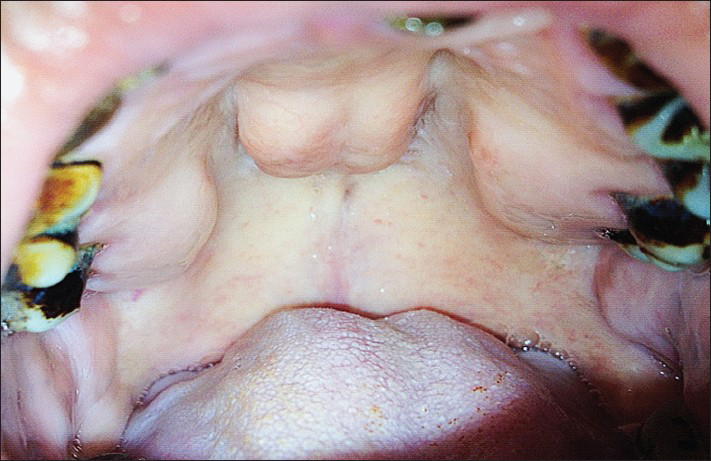Translate this page into:
Triple torus palatinus
*For correspondence: zhengping@mail.ndmctsgh.edu.tw
This is an open-access article distributed under the terms of the Creative Commons Attribution-Noncommercial-Share Alike 3.0 Unported, which permits unrestricted use, distribution, and reproduction in any medium, provided the original work is properly cited.
This article was originally published by Medknow Publications & Media Pvt Ltd and was migrated to Scientific Scholar after the change of Publisher.
A 54 year old asymptomatic woman presented with three incidentally noted intraoral masses in January 2013, in the outpatients department of Olaryngology, Tri-Service General Hospital, Taipei, Taiwan. The patient's medical history was unremarkable. She reported no associated pain, pruritus, or other symptoms. Clinical examination revealed three hard, sessile nodules with normal overlying mucosa on the hard palate (Fig.). No notable abnormalities were identified on radiographs. Torus palatinus, the most common intraoral exostosis among postmenopausal women, is a non pathologic bony overgrowth in the midpalatine region. The growth of torus palatinus is gradual, becoming greater in the second or the third decade of life. The torus palatinus can be unilobular or polylobulated, as well as flat or spindle-shaped. Removal of the palatal tori is not always necessary except for offering patients another alternative for rehabilitating the jaw by means of a prosthetic implant. Since this patient was asymptomatic, no surgical intervention was required.

- Triple torus palatinus.





